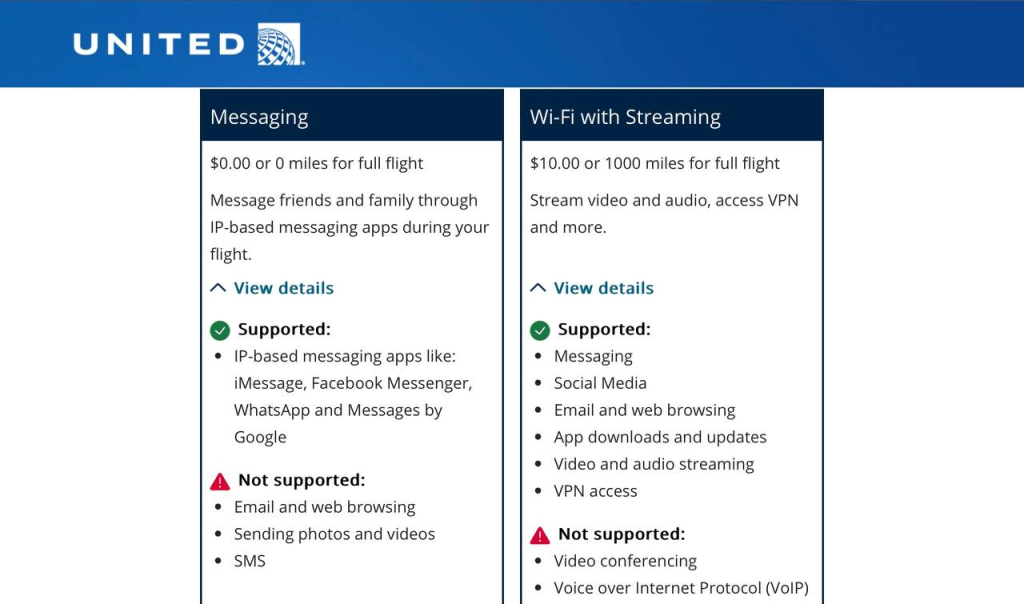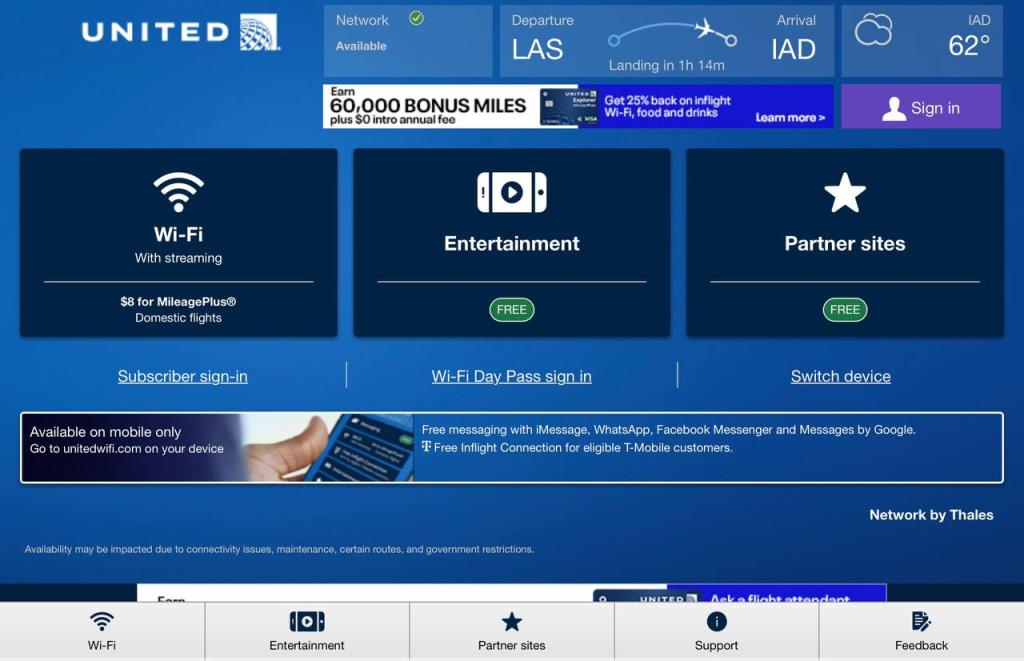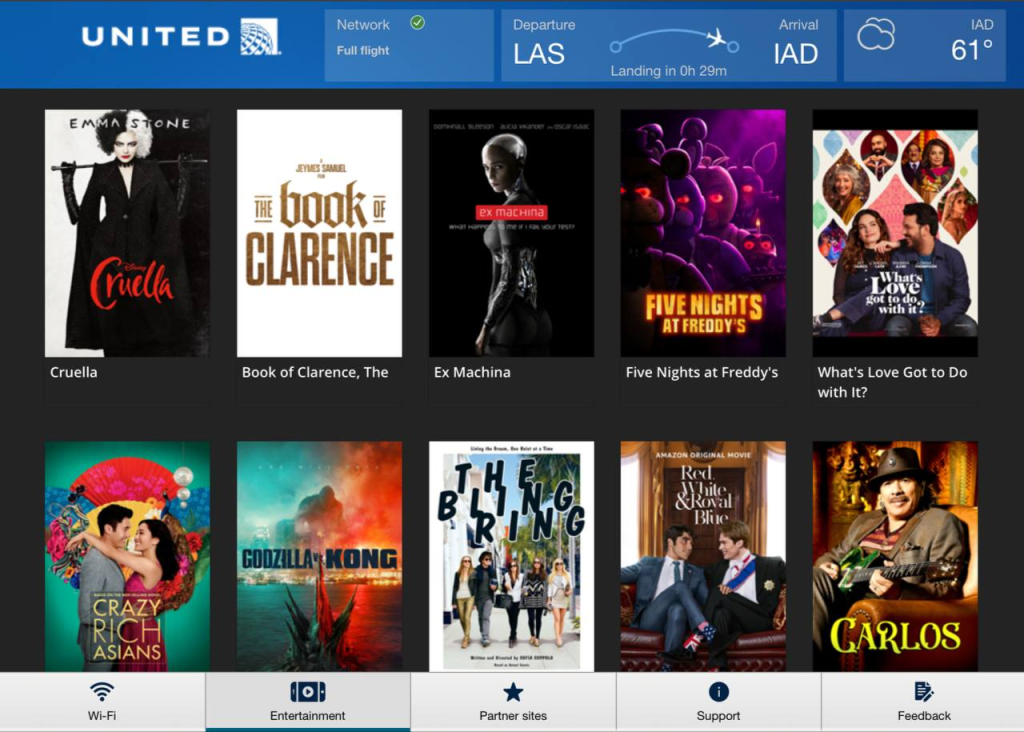Airlines
United Airlines Boeing 737-800 Flight Review: Domestic Economy Done Right

Welcome to another flight review, where we would be flying on United Airlines Boeing 737-800 aircraft on a 4 hour transcontinental flight from Las Vegas to Washington!
Las Vegas consists of 2 main terminals for commercial airlines, Terminal 3 and Terminal 1. Both Terminals serve different airlines, with Terminal 1 more focused on Low Cost Carriers, while Terminal 3 serving the main carriers such as Delta, American, United Airlines, together with international operators.
We are currently in Terminal 3, which has a wide offering of food and drinks. Furthermore, since we are in Las Vegas, there definitely are some slot machines around the terminal for those who are hoping to make a quick buck before their flight. There was also supposed to be a gaming lounge, but it was closed due to renovation.

Upon reaching the gate, we were informed of an approximately 30 minute delay to our departure time, due to the aircraft leaving its previous leg late.

Here is our aircraft, ship 3506, a 17 year old Boeing 737 which would be ferrying us to Washington. Here she is, decked in the old United Airlines colour scheme, The boarding process soon began, with passengers being called to called based on their boarding group, so as to ensure an orderly boarding process.

We were warmly welcomed aboard by the cabin crew, where sanitising wipes were available upon request. For this flight, I selected 28F, a Window seat. The Economy Class layout in United’s Boeing 737-800 is in a 3-3 configuration, while Business Class is in a 2-2 layout.

This particular aircraft is still fitted with the old cabin of United Airlines, with no in-seat power outlet, small Inflight Entertainment Screens, together with a dated cabin.


United is currently updating their Boeing 737 fleet to have a wider Inflight Entertainment Screen, which includes a USB power port for you to charge your devices. It will definitely be a welcome change on the longer transcontinental flights especially.
The seats are sufficiently wide, with a rather sufficient legroom offered on the aircraft. Although not generous, I was still able to stretch my legs, so definitely no complaints. The seat has two pockets, one right below the screen, with the other at knee level, which allows you to store your personal electronic devices safely. There are also adjustable headrests, which is always an amazing feature on a seat.
Soon, we were greeted by the Captain, who warmly welcomed us onboard, before apologising for the slight delay, informing us that he would attempt to get us airborne as soon as possible.
Inflight Service
After approximately 30 minutes after takeoff, the flight crew prepared the cabin for snack service. Starting at the front of the cabin, they slowly made their way to the back.
This is where I feel United really shines, especially for flights on the North American Continent. There are small snacks such as pretzels, chocolate and chips, together with non alcoholic beverages which are provided complimentary to the passengers. There is a wide range of beverages being provided, from Water, Orange Juice to even Ginger Ale. Everyone was given 1 choice of beverage and snack for this service.

Headphones were also handed out on demand, which was definitely what set United apart from other airlines in their Domestic Economy class. In fact, some airlines do not issue headphones for free on International Economy class on the North American continent flights.
After approximately an hour, the flight crews were walking about, offering passengers a coffee or tea, or any other beverage. Passengers could also request for other drinks of their choice, together with snacks, though some snacks are chargeable.
Passengers could request for drinks or snacks throughout the entire flight, with the crew occasionally making rounds offering water to passengers.
United Airlines has the option of allowing their passengers to add their credit cards online, before boarding the flights, so as to ensure a contactless transaction. The cost of items ordered would be billed to that particular card, therefore negating the need for passengers to go through the hassle of finding their credit cards onboard. Cash payments are also not accepted onboard the flight, therefore requiring a card for in flight purchases.
There is wifi provided onboard, with free internet access to messaging applications. The internet was rather fast, and offered great connectivity onboard, enabling you to stay in contact with your loved ones even in the air.

Free wifi for streaming and internet surfing is provided to T-Mobile customers, and other passengers could also purchase wifi for the entire flight for the same purpose. The wifi could also be used to stream movies to your own device, with a large range of movies and TV shows which could be watched online.

The selection of movies are definitely more than sufficient to keep everyone occupied for the duration of the entire flight.

Soon, we landed at Washington Dulles International Airport, just slightly behind schedule. We deplaned via an airbridge to a remote concourse, where we were ferried to the main terminal via a mobile lounge, which in my opinion is quite a unique system.
Delay Management done right
One thing which really impressed me thoroughly was United’s management of delays. Knowing that the aircraft would be approximately 10 minutes late, the flight crews identified those passengers who have connecting flights through lighting the crew call button, therefore providing a visible identification.

Upon landing, passengers were advised to remain seated and let these passengers deplane first, so they could make up for the lost time. United Airlines were also transparent with the information and steps taken to mitigate delays to the travellers’ travel plans through keeping everyone in the aircraft updated with the status of the aircraft arrival.

Final Thoughts
United’s Cabin Service exceeded my expectations, especially with the offering of earphones to all passengers in Economy, ensuring that passengers were able to enjoy the wide selection of inflight entertainment offered. This is in stark contrast to certain North American Carriers, where they follow a bring your own headphones concept, resulting in some passengers being unable to enjoy the inflight entertainment. Furthermore, the attentiveness of the crew certainly played a part in ensuring an amazing flight, ensuring that the passengers were comfortable and well hydrated.

Airlines
Sanctions & Engine Issues Ground Half of Russia’s A320neo fleet

Russia’s aviation sector, already strained by Western sanctions, faces another setback as nearly half of its Airbus A320neo family aircraft are grounded due to unresolved engine issues.
This development highlights the growing challenges for russia commercial aircraft in maintaining their fleets under the weight of global restrictions and limited access to spare parts.
Out of the 66 Airbus A320neo and A321neo jets in Russia, 34 are now out of service, according to the Kommersant business newspaper. These planes are powered by engines manufactured by Pratt & Whitney, a subsidiary of RTX Corporation.
DAMAC Air: Dubai’s New Luxury Airline Offers Free Flights for Registration
The engines are affected by a previously identified defect in the metal used for certain parts, prompting accelerated inspections and maintenance.
Sanctions have compounded the issue, blocking the supply of essential components from major manufacturers like Boeing and Airbus. Without proper maintenance, experts warn that these aircraft may face decommissioning as early as 2026.
COMAC Unveils Plans for the C929 to Rival Airbus and Boeing
Airlines like S7, which operates a significant portion of these grounded jets, plan to conserve the engines for future use during peak travel seasons. However, reports suggest that over 20 of S7’s Airbus planes have engines that have already reached the end of their operational lifespan. Recently, russia seeks assistance from kazakhstan’s airlines to bolster its domestic flights.
While some A320neo and A321neo planes in Russia are equipped with French-made LEAP engines, which are seen as less problematic, the challenges remain daunting.
The situation underscores the long-term impact of sanctions on Russia’s aviation sector and the increasing difficulties in keeping its modern fleets operational.
-

 Aviation2 months ago
Aviation2 months agoMicrosoft Flight Simulator Raises $3 Million to Bring Back the An-225 Mriya
-

 Airlines2 months ago
Airlines2 months agoQantas Engineers Stage Walkout Over Cost of Living Concerns
-

 Airlines2 months ago
Airlines2 months agoQatar Citizens Can Travel to the United States Without a Visa
-

 Aviation2 months ago
Aviation2 months agoQatar Airways bans these new Electronic Devices on plane
-

 Airlines2 months ago
Airlines2 months agoJapan Airlines Rolls Out Free Domestic Flights to International Passengers
-

 Defence2 months ago
Defence2 months agoWhich Country Has the Largest Fleet of Fighter Aircraft?
-

 Airport2 months ago
Airport2 months agoWestern Sydney Airport Welcomes Its First Plane After 6 Years of construction
-

 Aviation2 months ago
Aviation2 months agoDid you know ? Once Boeing 747 carried 1088 passenger in 1991








